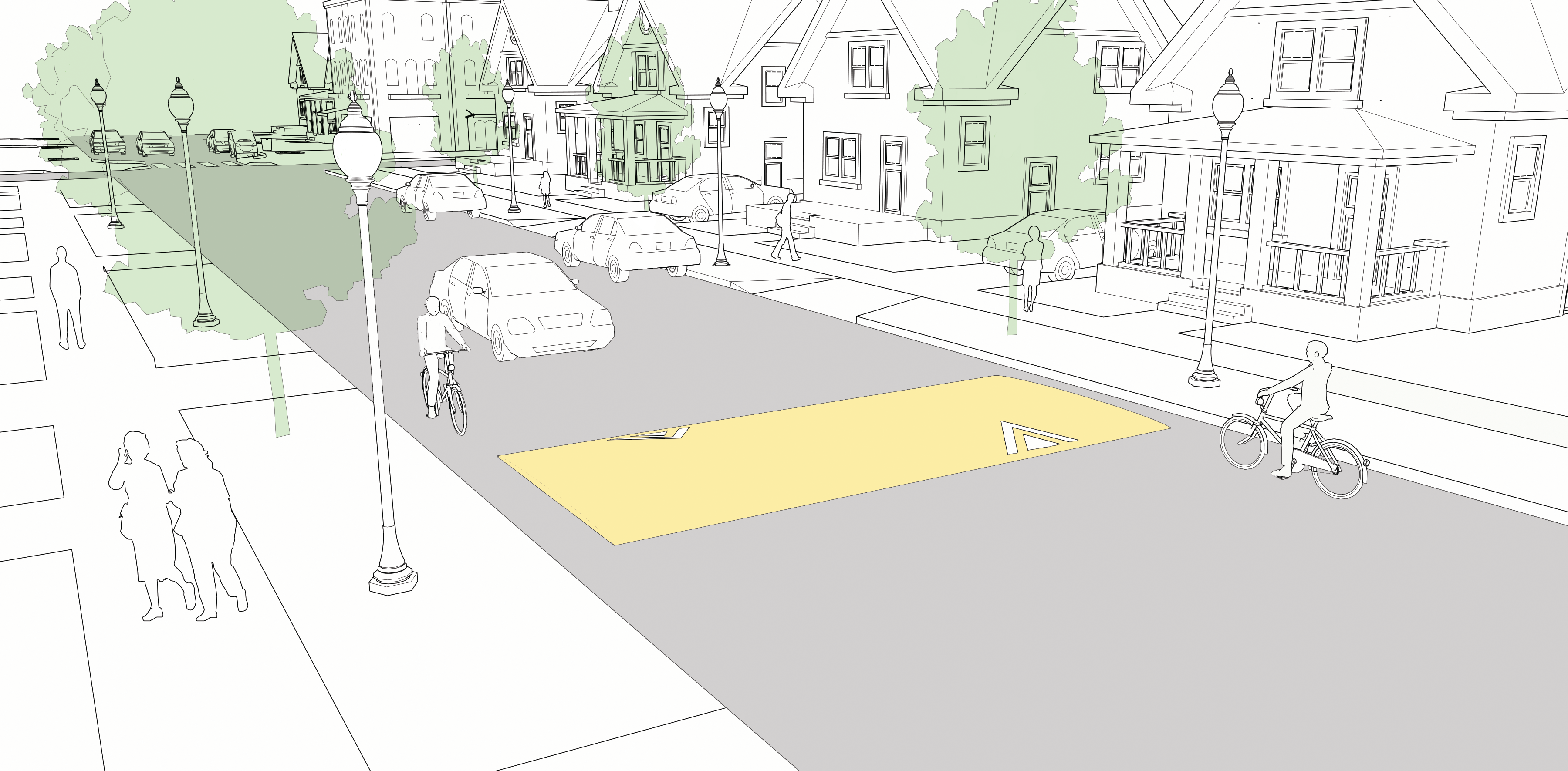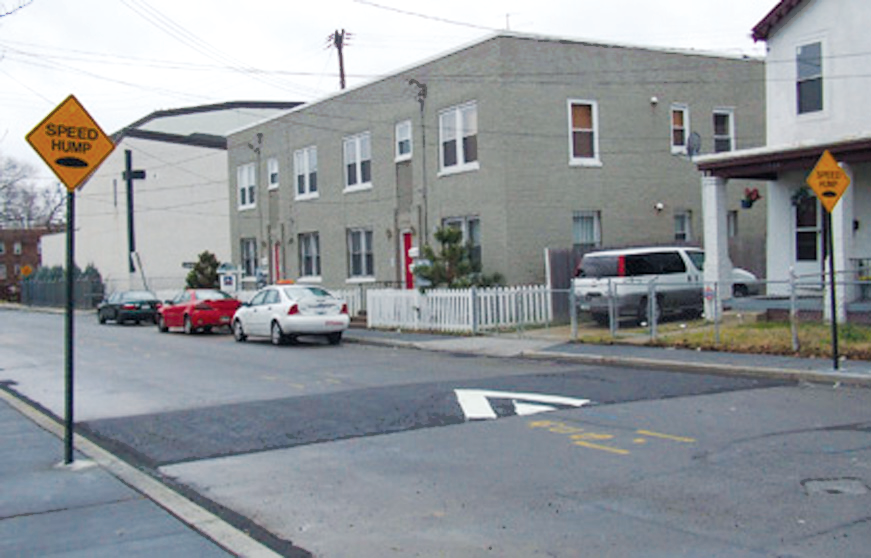Speed humps are parabolic vertical traffic calming devices intended to slow traffic speeds on low-volume, low-speed roads. Speed humps are 3–4 inches high and 12–14 feet wide, with a ramp length of 3–6 feet, depending on target speed. Speed humps reduce speeds to 15–20 mph and are often referred to as “bumps” on signage and by the general public.

Critical
Vertical speed control elements shall be accompanied by a sign warning drivers of the upcoming device (MUTCD W17-1).
Speed humps shall not be placed in front of driveways or other significant access areas. Where frequent driveways make the application of a speed hump difficult, reduce the overall size of the speed hump, or work with local residents to find a workable solution.
Recommended
Speed humps should be designed to the following criteria:
- Slopes should not exceed 1:10 or be less steep than 1:25.
- Side slopes on tapers should be no greater than 1:6.
- The vertical lip should be no more than a quarter-inch high.
Locate vertical speed control elements where there is sufficient visibility and available lighting.
Spacing for vertical speed controls should be determined based on the target speed of the roadway. Speed humps should be spaced no more than a maximum of 500 feet apart to achieve an 85th percentile speed of 25–35 mph. To achieve greater speed reductions, space speed humps close together.
Speed humps may be applied on 1-way or 2-way roads.

Many residential streets have ample right-of-way for two lanes of travel plus parking,
resulting in higher than desired speeds.

Speed humps are almost exclusively used in residential areas and are often paired with
signs (MUTCD W17-1).